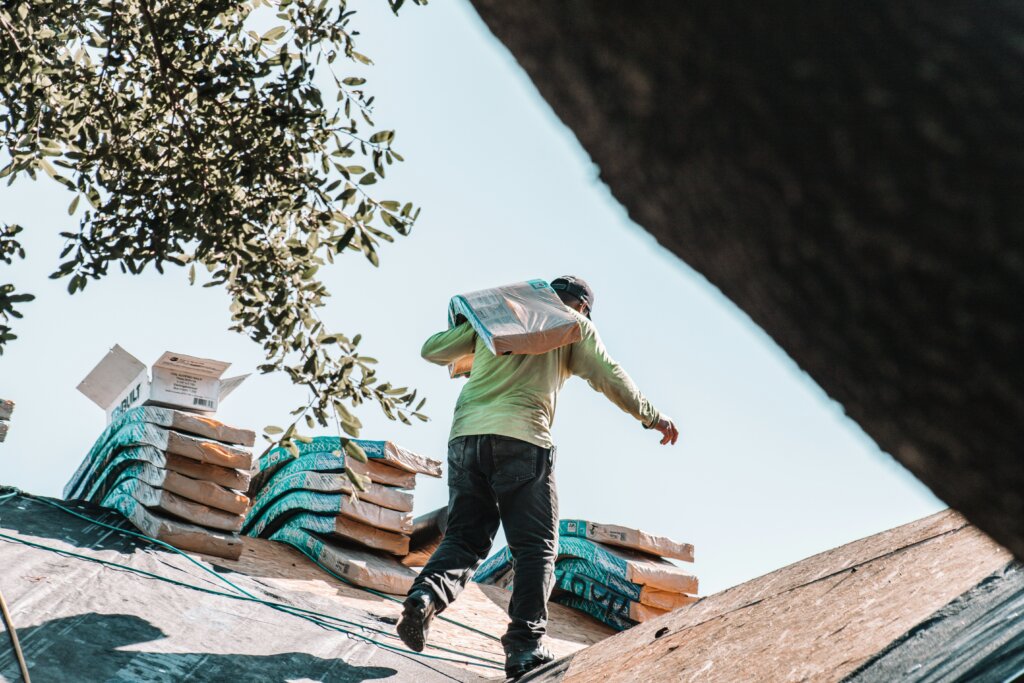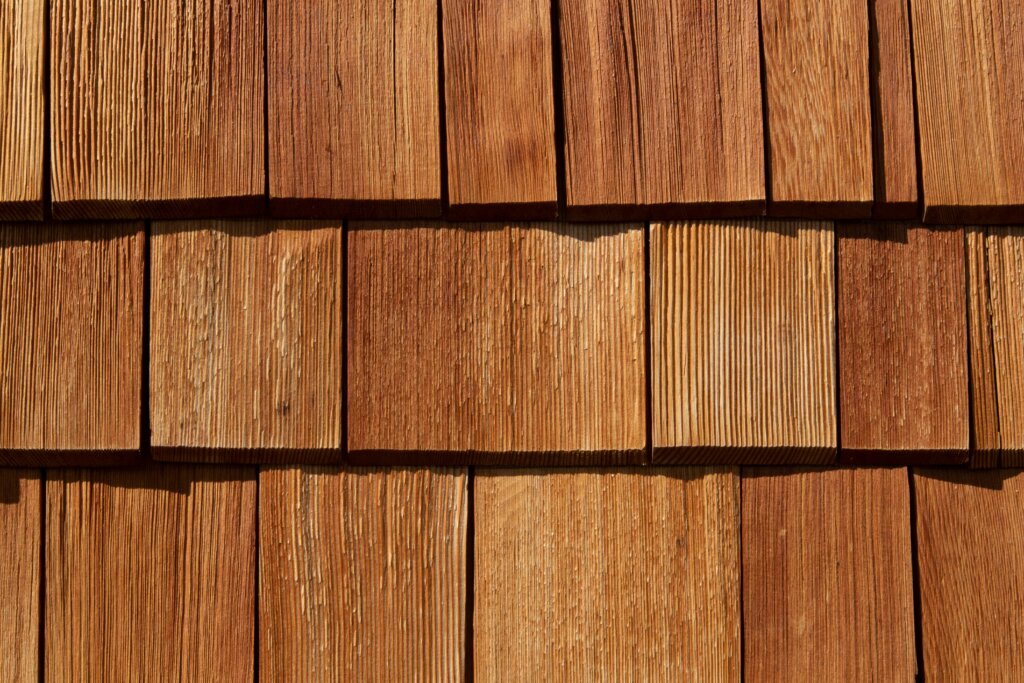When it comes to protecting your home from the elements, your roof is your first line of defense. At Allegiant Roofers, we know that understanding roofing materials is essential for homeowners in Cincinnati and Dayton, Ohio. One of the most common roofing materials is shingles, but what are roof shingles made of? In this article, we’ll break down the different types of roof shingles, their materials, and their benefits to help you make an informed decision.

What Are Roof Shingles Made Of?
Roof shingles come in various materials, each with unique characteristics that impact durability, cost, and performance. The most common materials include:
Asphalt Shingles
The most popular roofing and shingle material in the U.S., asphalt shingles are cost-effective and durable. They consist of a fiberglass or organic mat base, asphalt coating for waterproofing, and protective granules for UV resistance.
Benefits of Asphalt Shingles:
- Affordable – One of the most budget-friendly roofing materials.
- Easy to Install – Quick and simple installation process.
- Variety of Shingle Colors and Styles – Available in multiple shades and textures.
- Good Weather Resistance – Withstands moderate wind, rain, and temperature fluctuations.
- Lifespan – Lasts 15-30 years depending on the type.
Fiberglass Shingles
Fiberglass shingles are a specific type of asphalt shingle that uses a fiberglass base rather than an organic felt mat. The fiberglass increases strength and fire resistance while maintaining a lightweight profile.
Benefits of Fiberglass Shingles:
- Fire-Resistant – Offers better fire resistance than organic-based asphalt shingles.
- Lighter Weight – Easier to install and reduces roof load.
- More Durable – Longer lifespan than traditional organic shingles.
- Energy Efficient – Reflective granules help reduce heat absorption.
Organic Mat Shingles
Older asphalt shingles used an organic mat base, typically made from felt or recycled paper saturated in asphalt. While these shingles were once standard, they have largely been replaced by fiberglass shingles due to better durability and weather resistance.
Benefits of Organic Mat Shingles:
- Good Waterproofing – The asphalt-saturated mat helps resist moisture.
- Heavy and Durable – Some homeowners prefer the weight for stability.
- More Flexible – Can better withstand extreme temperature swings.
Composite Roof Shingles
Composite shingles are made from a blend of synthetic materials, including polymers, rubber, and recycled plastics. They mimic the look of wood or slate but come with superior durability and lower maintenance.
Benefits of Composite Shingles:
- Lightweight – Easier to install than real slate or wood.
- Resistant to Mold, Algae, and Fire – Longer-lasting with minimal upkeep.
- Eco-Friendly – Often made from recycled materials.
- Longer Lifespan – Typically lasts 30–50 years.
- Realistic Appearance – Mimics the look of natural wood or slate without maintenance concerns.
Wood Shingles and Shakes
Wood shingles and shakes offer a classic, natural appearance and are typically made from cedar, redwood, or pine. Shingles are machine-cut for a uniform look, while shakes are hand-split for a more rustic, textured aesthetic.

Benefits of Wood Shingles and Shakes:
- Aesthetic Appeal – Provides a timeless, high-end look.
- Natural Insulation – Helps regulate indoor temperature better than asphalt shingles.
- Durability – Properly maintained wood shingles can last 30–50 years.
- Eco-Friendly – Made from natural materials and biodegradable.
Metal Shingles
Metal shingles are made from materials like aluminum, steel, copper, or zinc. They combine the durability of metal with the aesthetic appeal of traditional shingles.
Benefits of Metal Shingles:
- Extreme Durability – Lasts 40-70 years or more.
- Energy Efficient – Reflects heat, reducing cooling costs.
- Low Maintenance – Resistant to mold, rot, and insect damage.
- Weather-Resistant – Excellent wind, fire, and impact resistance.
Slate Shingles
Slate is a premium roofing material made from natural stone. It offers unparalleled beauty and an exceptionally long lifespan, often exceeding 100 years.
Benefits of Slate Shingles:
- Unmatched Longevity – Can last a century or more with proper care.
- High-End Appearance – Elegant and timeless.
- Fireproof – Completely resistant to fire.
- Low Maintenance – Does not rot or decay.
Types of Asphalt Shingles
Asphalt shingles dominate the U.S. roofing market due to their affordability, ease of installation, and weather resistance. They typically consist of:
| Component | Purpose |
|---|---|
| Fiberglass or Organic Mat | Provides structure and flexibility |
| Asphalt Coating | Adds waterproofing and durability |
| Ceramic Granules | Protect against UV rays and add color |
| Adhesive Strips | Enhance wind resistance |
3-Tab Shingles
3-tab shingles are the most basic and budget-friendly asphalt shingles. They have a uniform appearance with three tabs cut into each shingle strip.
Benefits of 3-Tab Shingles:
- Affordable – Least expensive asphalt shingle option.
- Lightweight – Easy to install and transport.
- Simple Appearance – A clean, traditional look.
- Lifespan – Typically lasts 15–20 years.
Architectural Shingles
Architectural shingles, also called dimensional shingles, are a premium asphalt shingle option featuring multiple layers for a textured, high-end appearance.
Benefits of Architectural Shingles:
- Better Durability – Lasts 25–50 years.
- More Wind Resistance – Withstands up to 130 mph winds.
- Aesthetic Appeal – Mimics high-end materials like slate or wood.
- Higher Resale Value – Increases home value more than 3-tab shingles.
Impact-Resistant Shingles
Impact-resistant shingles are designed to withstand hail, falling debris, and severe weather.
Benefits of Impact-Resistant Shingles:
- Increased Durability – Reduces risk of damage in storms.
- Lower Insurance Costs – Some policies offer discounts for impact-resistant roofing.
- Longer Lifespan – Less susceptible to damage over time.
